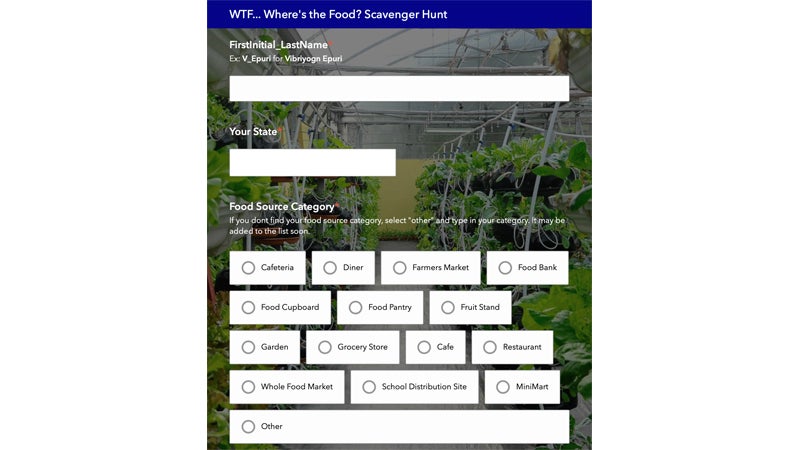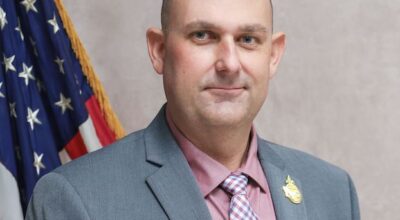Louisiana author supports LA 4-H Tech Club’s project to solve food insecurity
Published 10:41 am Friday, February 26, 2021
|
Getting your Trinity Audio player ready...
|
BATON ROUGE-EINPresswire.com/ — What do Amazon best-selling author Mark S. Lewis, and Fran Harvey, GISP, director of the non-profit organization, Global Geospatial Institute, have in common? They both believe that spreading positivity and giving back to the community are the keys to success in life and in business.
Mark S. Lewis, the author of GIVE A DAMN – The Ticket to Cultural Change, wrote his book with the goal of starting a movement. Starting with his belief that traditional values such as honesty, trust, accountability, responsibility, altruism, respect and integrity are the foundation of moral wealth and prosperity, he asks that we embrace the GIVE A DAMN! philosophy and make a commitment to putting others’ needs before self. Lewis believes this will help lift our communities and society-at-large and there is no better time to start than now. When he met Fran Harvey, the director of Global Geospatial Institute (GGI) he was impressed by the school’s mission – to work with students to create a better world utilizing GIS technology. Lewis offered to help by offering to promote the student’s latest project, “Where’s the Food” and offered to donate one dollar to the nonprofit for each Global Accountability Pledge taken in February.
GGI embodies the GIVE A DAMN ideal by offering spatial education with state-of-the-art-technology to students so that they can solve real world problems and become global citizens. By utilizing hands-on project based learning, real world problem solving and service learning, the school provides students with a future career track. GGI sponsors the Louisiana 4-H Tech Club on the state and national level. In its latest project, the “Where’s the Food” survey, the tech club featured maps that visualize community problems and solutions to improve health, nutrition, and safety in the areas where they live. “By visualizing local, ‘food access’ problems facing students, families, communities, producers, processors, distributors, and consumers, we help youth, and their families understand the needs and alternatives to community problems (substance abuse, obesity, and food access),” Harvey said. In February, youth Delegates from Louisiana (LA), North Caroline (NC), New York (NY), and Tennessee (TN) presented “Where’s the Food” at the National Youth Summit on Healthy Living. The summit (held virtually in 2021) brings together high school students for three days of hands-on activities and workshops led by leaders and educators in these fields.
Lewis was proud to lend his support to GGI and the LA 4-H Tech Club as he is aware of the news that millions of families are going to bed hungry every night due to the Covid-19 health emergency. Nationwide, 4-H Action Teams are emerging to help by tackling “Food Insecurity” in their communities. Katherine Winchester, the project lead member of the LA 4-H Tech Club, described the team’s 2021 entry. “The Where’s the Food (WTF) Survey features maps that visualize community problems and solutions to improve health, nutrition, and safety in the areas where they live,” she said. “By visualizing local, ‘food access’ problems facing students, families, communities, producers, processors, distributors, and consumers, we help youth, and their families understand the needs and alternatives to community problems (substance abuse, obesity, and food access).”
To create the maps, team members Katherine Winchester, Susanna Shields, Izzy Gruner (St. Joseph Academy), Jane Zaruba (Home Schooled) and Vibriyogn Epuri (Southeastern University of Louisiana) utilized data from SNAP (Supplemental Nutrition Assistance Programs) to show food locations with hotspots for Food Stamps/EBT Cards and a census tract that revealed both low-income and low-access criteria. Winchester, a sophomore student at the Saint Joseph’s Academy, said the project’s goal was to make and share available maps with the community to help people find healthy food, especially during the Covid-19 health emergency and beyond. To advance their goals, youth interviewed local health and public safety officials in their community to identify critical problems and how youth might help. They identified school closings, transportation limitations, and how food providers were disrupted by the Covid-19 health emergency, especially in low-income and remote rural areas.
Lewis’ Give A Damn Movement is inspired by organizations like GGI, who truly Give A Damn about the community they live in and believe in turning their passion into a purpose to give back. To join the movement, you can take the Global Accountability Pledge and commit to serving others and do so without ego, criticism, condemning, or complaining. Lewis believes that if we can get more people to carry out the GIVE A DAMN philosophy and principles each and every day to the best of their abilities, we will see an essential cultural shift in mindset. “Individually, you can make a difference, but collectively we change the world,” he said. An inspiring business mentor, coach, consultant, and speaker, Lewis has spread his practical advice and positive message globally.
The Global Geospatial Institute (GGI) team offers spatial education though state-of-the-art technology to put Geographic Information System (GIS) and Remote Sensing (RS) technology in the hands of as many students as it can by utilizing hands-on project based learning, real world problem solving and service learning. By introducing GIS to K-12, especially middle school students, in a variety of ways, GGI provides students with a future career track. High school students can then register for a GIS course to ultimately obtain a GIS IBC (Industry-Based Certification). Currently, the GIS IBC is in two Jump Start Pathways; Manufacturing Construction Crafts and Logistics Pathway and Environmental Protection and Sustainability Pathway. Global Geospatial Institute is the only industry accredited program in the State of Louisiana that prepares high school students and lifelong learners with the tools they need to advance in workforce development and compete in a global job market.





